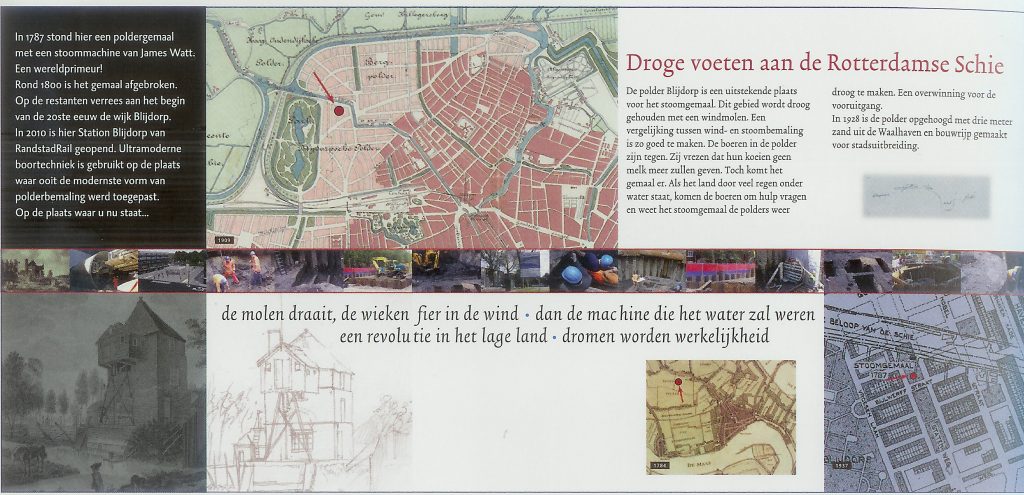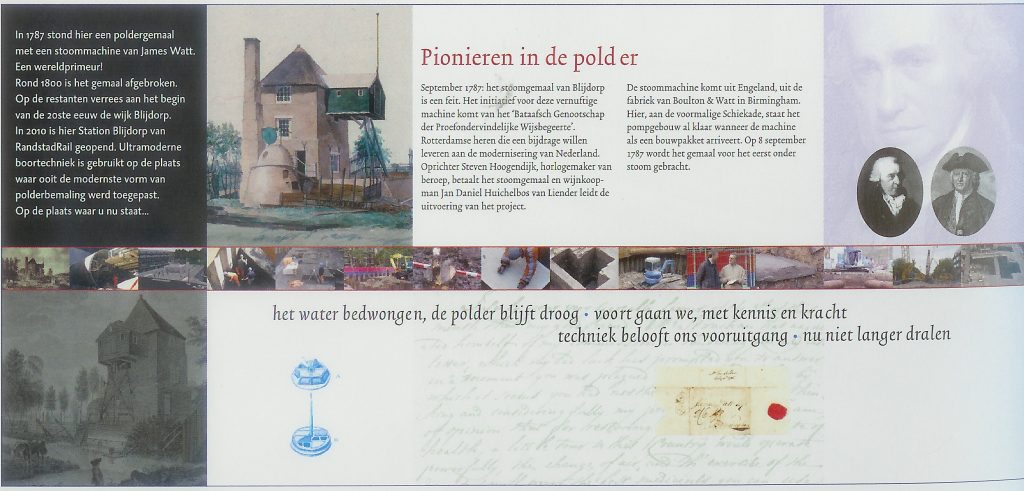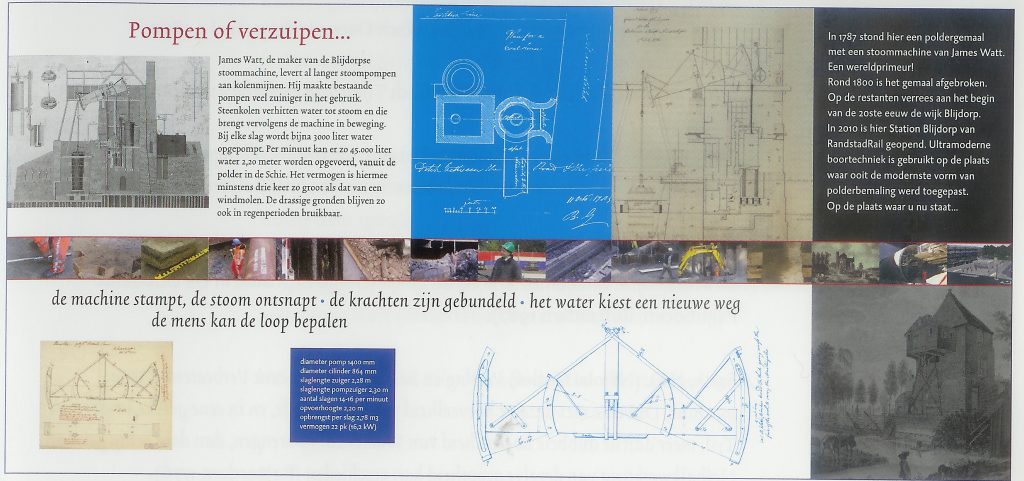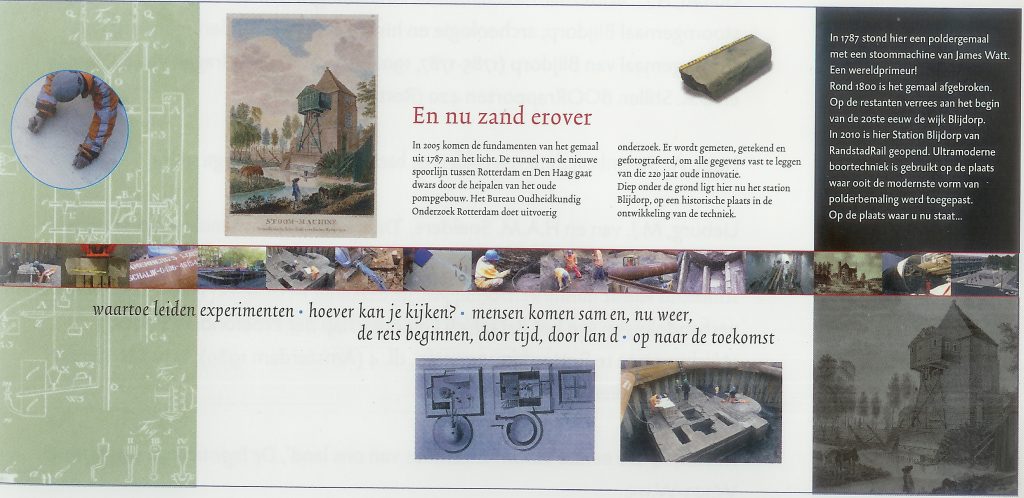The efforts of our founder Steven Hoogendijk (1698 – 1788) to turn the rise of medical science and technology into a practical improvement for the living standards of Rotterdam citizens went further than the founding of our Society with his attempts to dewatering using steam engines to realise.
Although when the Society was founded – by will of June 3, 1769 – it was determined that only the interest from the legacies made available, a total of approximately NLG 200,000 [1], could be used for activities [2] , this restriction of course did not apply to Steven Hoogendijk himself.
It has been known since 1742 that Steven Hoogendijk had been involved in Rotterdam’s water management by proposing improvements to the existing windmill for canal drainage. However, this centuries-old proven technology has a major disadvantage: its dependence on wind.
This ultimately led to the first attempt in 1774 to try out the drainage of Rotterdam’s canals with a wind-independent steam engine based on Newcomen’s principle, which was installed in the Stadskruittoren near the Oostpoort at a cost of 30,000 guilders.
This attempt failed in 1779 due to design errors and technical setbacks, after which Steven Hoogendijk left further efforts to achieve steam drainage entirely to his friend Jan Daniël Huichelbos van Liender (1732 – 1809), whom he provided with ample resources for this purpose and asked him to became one of the directors of the Society in 1786. Huichelbos van Liender carried out his task exceptionally well (here).
In that year (1786), after years of preparation, construction of the foundation and housing of the steam pumping station according to the principle of James Watt began in the Blijdorp polder.
It is this foundation that was excavated in 2004 – and earlier in 1902 – to record it archaeologically for posterity and which excavation gave rise to the commemorative placards about the “Kezending” in the Randstadrail station Blijdorp and the commemorative edition: “Het Keezending in the Blijdorp polder, 1787: James Watt’s first steam engine in the Netherlands” [1].
The four placards (see below) beautifully express what ‘our’ steam pumping station was built for, by whom, according to which progressive principle and what is now left of the foundation.
The name “Kezendending” is unfortunately not highlighted, although it could be to the credit of the citizens of Rotterdam and our Society that before the arrival of the French – Batavian Republic 1795-1801 – they were mainly patriotic in nature. Keezending is therefore derived from the word Keezen (the name for the Patriots) and in the eyes of the farmers of the Blijdorp polder, the steam pumping station was the “thing” of the Patriots of the Batavian Society.
Although the Keezending was not immediately imitated – the Netherlands of the 18th and early 19th centuries was not yet ready for it – this development was eventually followed by the reclamation of the Haarlemmermeer in 1852.
[1] The Keezending in the Blijdorp polder, 2010 R. Daalder, N. Schadee, W. Boon, T. Guiran and M. van Trierum, ISBN: 978-815390-1-2
[2] New treatises of the Batavian Society of Experimental Philosophy in Rotterdam, 1989 M.J. van Lieburg and H.A.M. Snelders, ISBN: 90-5183-088-2



